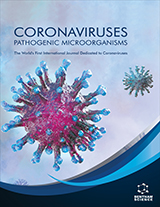Abstract
Background: The global incidence of SARS-CoV-2 infection is now very low. Despite the vaccination drive worldwide, the emergence of new omicron variants and their infection have been reported in a few countries. It is now required to identify potential risks associated with the COVID-19 disease aftermath’s 3rd disease wave. During pandemic stages, the healthcare system bears a significant burden in identifying early risk and providing early management to reduce infection.
Methods: In this investigation, an attempt has been made to assess the laboratory risk of SARS-CoV-2 contamination. The samples were collected from the various blocks of the testing centre, including the surface, floor, diagnostic instruments, solutions, and tap water, and then RNA was isolated and in vitro diagnostic RT-qPCR was performed. A total of 316 samples were collected and analysed for the presence of SARS-CoV-2 RNA. Our findings confirmed that only four samples (1.77%) had ORF-1ab and E gene signals, which indicated the presence of SARS-CoV-2 RNA. The CT values for the E gene were 34.52 [IQR: 32.37-36.36] and 35.02 [IQR:34.25-35.76] for the ORF1-ab gene, respectively.
Results: All four were taken from the surfaces, indicating that other parts were contamination-free. Very few positive contaminations demonstrated that laboratory sterilising processes are fully functional and effective.
Conclusion: This study eventually provided more information about the presence of SARS-CoV-2 RNA traces in the environment aftermath of 3rd disease wave of COVID-19, including diagnostic laboratories.
Graphical Abstract
[http://dx.doi.org/10.1016/j.chemosphere.2020.127973] [PMID: 32829224]
[http://dx.doi.org/10.1038/s41467-020-16670-2] [PMID: 32472043]
[http://dx.doi.org/10.1017/ice.2020.58] [PMID: 32131908]
[http://dx.doi.org/10.1016/j.scitotenv.2020.141710]
[http://dx.doi.org/10.3201/eid2607.200885] [PMID: 32275497]
[http://dx.doi.org/10.1101/2020.02.25.20028043]
[http://dx.doi.org/10.1038/s41586-020-2271-3] [PMID: 32340022]
[http://dx.doi.org/10.1001/jama.2020.3227] [PMID: 32129805]
[http://dx.doi.org/10.1038/s41598-020-69286-3] [PMID: 32728118]
[http://dx.doi.org/10.1016/j.jinf.2020.04.034] [PMID: 32360881]
[http://dx.doi.org/10.1093/cid/ciaa905] [PMID: 32634826]
[http://dx.doi.org/10.1016/j.ajic.2020.05.003] [PMID: 32407826]
[http://dx.doi.org/10.3390/ijerph19095560] [PMID: 35564956]
[http://dx.doi.org/10.21203/rs.3.rs-2062428/v1]
[http://dx.doi.org/10.1056/NEJMoa2001017] [PMID: 31978945]
[http://dx.doi.org/10.2174/1566524021666210803154250] [PMID: 34344288]
[http://dx.doi.org/10.1007/s10787-021-00903-x] [PMID: 35048262]
[http://dx.doi.org/10.1056/NEJMc2004973] [PMID: 32182409]
[http://dx.doi.org/10.1002/jmv.28103] [PMID: 36039831]
[http://dx.doi.org/10.1016/j.jhin.2020.11.024] [PMID: 33259882]
[http://dx.doi.org/10.1016/j.ajic.2020.06.188] [PMID: 32599101]
[http://dx.doi.org/10.1016/j.matt.2020.10.006] [PMID: 33043292]
[http://dx.doi.org/10.1016/S2666-5247(20)30003-3] [PMID: 32835322]




























